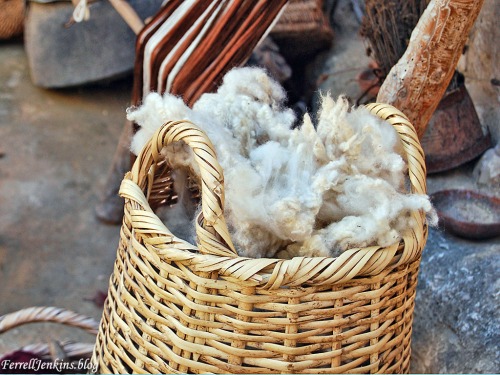The Bible records that King David provided materials for a proposed temple in Jerusalem before his death.
…and cedar timbers without number, for the Sidonians and Tyrians brought great quantities of cedar to David. (1 Chronicles 22:4 ESV; see verses 1-5)
- The cedars were floated from Lebanon to Joppa for Solomon’s Temple (2 Chronicles 2:16).
- Hiram, king of Tyre, built a cedar house for David (2 Samuel 5:11; 7:2).
- Solomon requested that Hiram have cedars of Lebanon cut for him (1 Chronicles 22:7).
- Cedars from Lebanon again were floated to Joppa for the rebuilding of the temple (520-516 B.C.; Ezra 3:7).
Only a few of the fabled cedars remain in Lebanon. One cluster of trees grow at Besharre in the north of Lebanon at an elevation of about 5000 feet or more above sea level. Our photo below was made in May, 2002, when there was some snow still on the surrounding mountains.
The cedars in Lebanon are now protected and may be cut for the wood only when a tree has fallen.
The Cedrus libani is described in Fauna and Flora of the Bible.
The enthusiasm with which the OT writings praise the cedar of Lebanon is understandable. It is a majestic tree of great beauty, reaching 27 m [88 ft.] in height and 12 m [39 ft.] in girth. Its long branches spread out horizontally from the trunk, and the leaves are dark and evergreen, glittering like silver in the sun. The cones take three years to mature. The fragrant wood is much sought after for building purposes, as it does not easily rot. Its great value as timber is often mentioned, especially in the history of King Solomon. (p. 108)
The next photo illustrates how the branches “spread out horizontally from the trunk.” This tree is different from the cedars so many of us have enjoyed for Christmas trees.
Not so many of the cedars remain because various nations have used them in buildings projects.
We have an example in a temple from the Late Bronze Age, a period of Egyptian control at Lachish. The description of the temple by David Ussishkin is fascinating, but I must concentrate on two things. Several charred beams were found on the floor of the building. Ussishkin says,
The roof was spanned by long wooden beams laid parallel to one another across the main hall. Their charred remains, identified as cedar of Lebanon, were found lying on the floor; altogether, remains of about ten beams could be detected along the southern part of the hall… (Ussishkin, David. “Excavations at Tel Lachish – 1973-1977.” Tel Aviv 5:1-2 (1978): 1-97: 13.
This temple is also designated as the Acropolis Temple. Information about it, including a plan and reconstruction drawings are found in Ussishkin, Biblical Lachish, pp. 140-164.
In our photo below that I made in 1980 only one piece of wood remains (in the center of our photo).

Charred beam made of Cedar of Lebanon in the Egyptian-period temple at Lachish. Photo by Ferrell Jenkins, 1980.
Notice the column base. Two of these were found in the temple. The scholars who analyzed the carbonized beams with a diameter of about 30 cm [12 inches]. Cedar trunks of that diameter could have been 14 metres [45 feet] or longer, and thus easily capable of spanning the ceiling across the main hall without additional support (Usshishkin, Excavations).
Ancient nations used the cedar of Lebanon for their boats and buildings. Several panels are displayed in the Louvre showing boats transporting logs of cedars of Lebanon for use in the palace of Sargon. Our photo shows a small portion of one panel.













You must be logged in to post a comment.